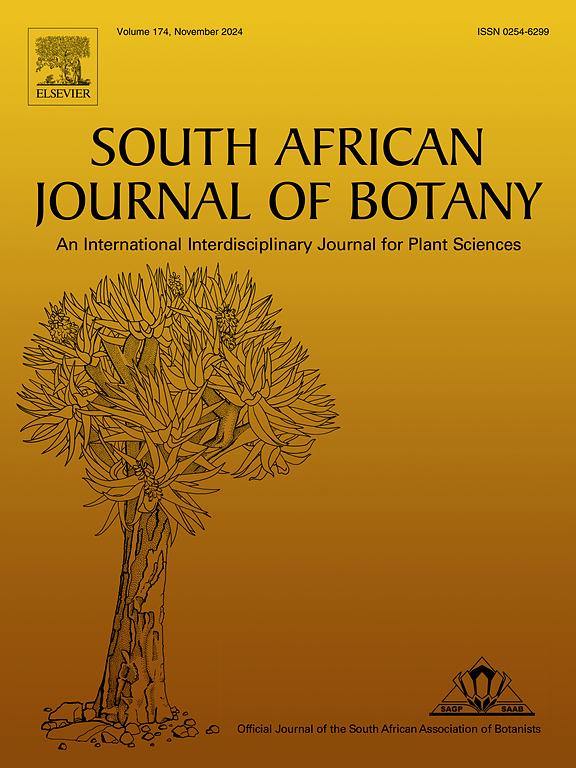Beyond plant physiology: Cu and Fe as factors in mangiferin degradation during honeybush processing
IF 2.7
3区 生物学
Q2 PLANT SCIENCES
引用次数: 0
Abstract
Honeybush herbal tea, produced from Cyclopia species, undergoes high-temperature oxidation to develop its characteristic sensory qualities and brown leaf colour. Besides its sensory appeal, honeybush tea contains high levels of the pharmacologically active xanthone, mangiferin. Essential plant micronutrients, copper (Cu) and iron (Fe), can act as catalysts of oxidation reactions. Their role in the stability of mangiferin and other polyphenols during the high-temperature oxidation step of honeybush processing has not yet been investigated. For this study, a large set of Cyclopia subternata plant material (n = 34) with variation in the Cu (3.7–17.6 mg/kg) and Fe (95.3–152.7 mg/kg) content was subjected to the typical high-temperature oxidation conditions (90 °C/16 h). Of these, three samples were selected for kinetic modelling of phenolic degradation over time. The phenolic degradation varied significantly across samples (reaction rate constant, K, for mangiferin differed up to 4.4-fold), which differed in phenolic and metal content. To elucidate the effect of Cu and Fe in a simplified system, mangiferin was degraded in heated (90 °C) model solutions containing Fe(II), Fe(III) or Cu(II), present at levels in the C. subternata plant material samples. Cu(II) accelerated mangiferin degradation (8.6–29.0-fold increase in K), attributed to enhanced recycling of Cu(II) to Cu(I) and formation of radical species. Fe(II/III) marginally increased mangiferin stability (1.1–2.5-fold decrease in K), attributed to the formation of inert metal-polyphenol complexes. The formation of different ratios of mangiferin isomers and dimers highlighted these different mechanisms. This study has advanced the understanding of the stability of mangiferin and other phenolic compounds during honeybush tea processing, particularly elucidating the role of Fe and Cu.
求助全文
约1分钟内获得全文
求助全文
来源期刊

South African Journal of Botany
生物-植物科学
CiteScore
5.20
自引率
9.70%
发文量
709
审稿时长
61 days
期刊介绍:
The South African Journal of Botany publishes original papers that deal with the classification, biodiversity, morphology, physiology, molecular biology, ecology, biotechnology, ethnobotany and other botanically related aspects of species that are of importance to southern Africa. Manuscripts dealing with significant new findings on other species of the world and general botanical principles will also be considered and are encouraged.
 求助内容:
求助内容: 应助结果提醒方式:
应助结果提醒方式:


